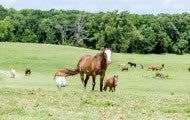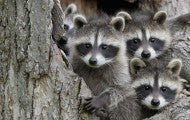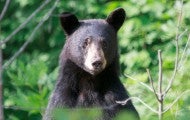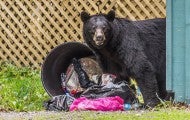Today, Washington Gov. Jay Inslee signed H.B. 1097 into law. The legislation will prohibit the sale of cosmetics in Washington that have been newly tested on animals. Passage of this law will prevent the cruel and unnecessary use of rabbits, guinea pigs, mice and rats to test cosmetic products if...
In a quiet corner of Black Beauty Ranch, on a stone plinth beneath a maple tree, there’s an oval etching of a man and a burro. The man is Cleveland Amory, author and founder of the Fund for Animals, and the burro is Friendly, one of the first animals to call the sanctuary home. The two met in 1980...
As black bear numbers increase in some North American communities and more people move into bear habitat, encounters between bears and people have risen. Whether you live in bear country or are just visiting, you can take simple steps to avoid conflicts. Learn More About Bears (Please note that this...
Once robust, populations of cougars (also known as mountain lions or pumas) have declined drastically across most of their range in the Americas. The population decline is due to the impact of extensive hunting and predator control, in addition to continued habitat loss and fragmentation. Cougars...
The choice to spay or neuter your pet may be one of the most important decisions you make impacting their long-term health—and your wallet! Your pet's health and longevity The average lifespan of spayed and neutered cats and dogs is demonstrably longer than the lifespan of those not. A University of...
It started in 2002: The bears around Durango, Colorado, came down from the hills to feast on the city’s garbage. Normally, natural food—nuts and berries and acorns—keeps them in the woods, but a series of droughts and late freezes in 2002, 2007, 2012 and 2017 left them hungry. Despite their fear of...





